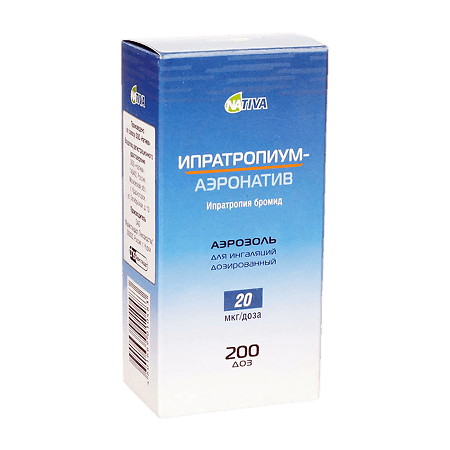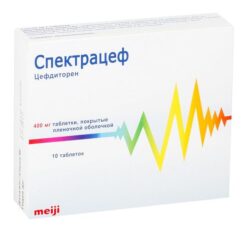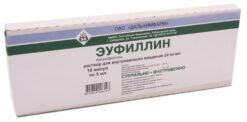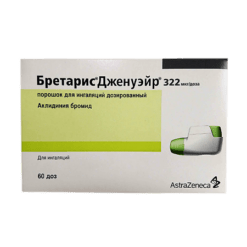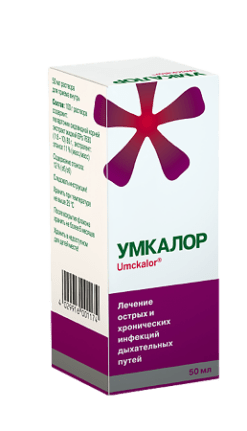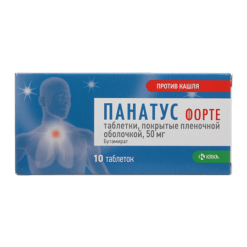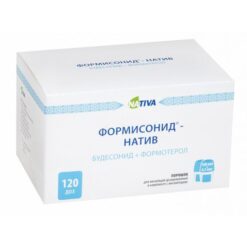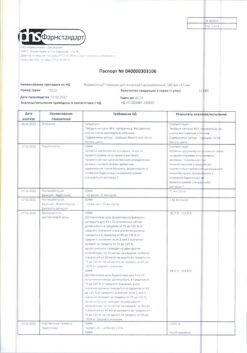No products in the cart.
Ipratropium Aeronativ, aerosol 20 mcg/dose 200 doses
€1.00
Out of stock
(E-mail when Stock is available)
Description
Ipratropium aeronativ is a bronchodilator.
Blocks M-cholinoreceptors of smooth muscles of tracheobronchial tree (mainly at the level of large and medium bronchi) and suppresses reflex bronchoconstriction. Having structural similarity with acetylcholine molecule, it is its competitive antagonist.
It effectively prevents bronchoconstriction resulting from inhalation of cigarette smoke, cold air, the action of various bronchospasmic substances, and also inhibits bronchial spasm associated with the influence of the vagus nerve. When administered by inhalation it has almost no resorptive action – for the development of tachycardia about 500 doses are inhaled, with only 10% reaching the small bronchi and alveoli, and the rest is deposited in the throat or oral cavity and swallowed.
In patients with bronchospasm caused by chronic obstructive pulmonary diseases (chronic bronchitis and pulmonary emphysema) it improves indexes of external respiratory function: volume of forced expiratory volume in the first second (FEF1) and maximal mean expiratory flow (FEF25-75%) increase by 15% and more just in 15 minutes after the drug administration, the maximum effect is noted in 1-2 hours and lasts for most patients up to 6 hours.
In patients with bronchial asthma a significant improvement of external respiratory function was noted in 40% of patients (FEF1 increased by 15% or more).
Indications
Indications
chronic bronchitis;
emphysema;
bronchial asthma (mild to moderate severity), especially with concomitant diseases of the cardiovascular system;
chronic obstructive pulmonary disease.
Pharmacological effect
Pharmacological effect
Ipratropium-aeronativ is a bronchodilator.
Blocks M-cholinergic receptors of the smooth muscles of the tracheobronchial tree (mainly at the level of large and medium bronchi) and suppresses reflex bronchoconstriction. Having structural similarity to the acetylcholine molecule, it is its competitive antagonist.
Effectively prevents the narrowing of the bronchi that occurs as a result of inhalation of cigarette smoke, cold air, the action of various bronchospasms, and also inhibits bronchospasm associated with the influence of the vagus nerve. When used inhalation, it has virtually no resorptive effect – for the development of tachycardia, about 500 doses must be inhaled, while only 10% reaches the small bronchi and alveoli, and the rest settles in the pharynx or oral cavity and is swallowed.
In patients with bronchospasm associated with chronic obstructive pulmonary diseases (chronic bronchitis and emphysema), it improves indicators of external respiratory function: forced expiratory volume in the first second (FEV1) and maximum average expiratory flow (FEF25-75%) increases by 15% or more within 15 minutes after administration of the drug, the maximum effect is observed after 1-2 hours, and lasts in most patients up to 6 hours.
In patients with bronchial asthma, a significant improvement in external respiratory function is observed in 40% of patients (FEV1 increased by 15% or more).
Special instructions
Special instructions
It is not recommended to prescribe the drug for emergency relief of an attack of bronchial asthma (since the bronchodilator effect develops later than that of β-adrenergic agonists). Patients with cystic fibrosis have an increased risk of developing gastrointestinal motility disorders. Patients should be able to correctly use Ipratropium-aeronative dosed inhalation aerosol. The patient should be informed that if inhalations are not effective enough or if the condition worsens, they should consult a doctor to change the treatment plan. In case of sudden onset and rapid progression of shortness of breath, the patient should also immediately consult a doctor. If any symptom of an attack of angle-closure glaucoma appears (pain in the eye, discomfort, blurred vision, the appearance of a halo and colored spots before the eyes in combination with conjunctival and corneal hyperemia), drops that cause constriction of the pupil should be prescribed and immediately consult an ophthalmologist.
Influence on the ability to drive a car and other vehicles, to work with moving mechanisms.
No studies have been conducted to study the effect of the drug on the ability to drive vehicles and operate machinery. In cases of side effects when using the drug, you should refrain from driving vehicles and operating machinery.
Active ingredient
Active ingredient
Ipratropium bromide
Composition
Composition
Active substance:
Ipratropium bromide monohydrate 0.021 mg (in terms of ipratropium bromide) (0.020 mg)
Excipients:
ethanol (absolute ethyl alcohol) – 9.75 mg,
citric acid monohydrate – 0.005 mg,
triethyl citrate – 0.15 mg,
propellant R134a (1,1,1,2-tetrafluoroethane) – 55.08 mg.
Contraindications
Contraindications
hypersensitivity to ipratropium bromide or other components of the drug;
hypersensitivity to atropine and its derivatives;
pregnancy (first trimester).
Side Effects
Side Effects
Allergic reactions: uncommon – skin rash, itching, angioedema of the tongue, lips and face, urticaria, laryngospasm, bronchospasm, exudative erythema multiforme, anaphylactic reactions.
Effects associated with the anticholinergic effect of the drug: rarely – supraventricular tachycardia, rapid heartbeat, impaired accommodation, decreased secretion of sweat glands, impaired motility of the gastrointestinal tract (GIT), constipation, urinary retention (these effects are reversible). Patients with obstructive urinary tract disorders have an increased risk of developing urinary retention.
From the nervous system: very often – headache.
From the digestive system: very often – nausea, often – dry mouth, rarely – diarrhea, abdominal pain, vomiting.
From the respiratory system: infrequently – cough; rarely – paradoxical bronchospasm.
From the organs of vision: very rarely – when an aerosol gets into the eyes, pupil dilation (mydriasis), increased intraocular pressure (especially in patients with angle-closure glaucoma), angle-closure glaucoma, and pain in the eye are observed. Eye pain or discomfort, blurred vision, the appearance of a halo and colored spots before the eyes in combination with conjunctival and corneal hyperemia can be symptoms of an attack of angle-closure glaucoma.
Other: very often – increased viscosity of sputum.
Interaction
Interaction
When used simultaneously, β2-adrenergic agonists and xanthine derivatives potentiate the bronchodilator effect of the drug. The anticholinergic effect is enhanced by antiparkinsonian drugs, quinidine, and tricyclic antidepressants. When used simultaneously with other anticholinergic drugs, an additive effect is observed.
Overdose
Overdose
Symptoms: no specific symptoms of overdose have been identified. Given the breadth of therapeutic action and the local method of application of Ipratropium-aeronativ, the occurrence of any serious anticholinergic symptoms is unlikely. Minor manifestations of systemic anticholinergic action are possible, such as dry mouth, accommodation disturbances, and increased heart rate.
Treatment: symptomatic therapy.
Manufacturer
Manufacturer
Pharmstandard-Leksredstva, Russia
Additional information
| Manufacturer | Nativa, Russia |
|---|---|
| Medication form | inhalation aerosol |
| Brand | Nativa |
Related products
Buy Ipratropium Aeronativ, aerosol 20 mcg/dose 200 doses with delivery to USA, UK, Europe and over 120 other countries.

